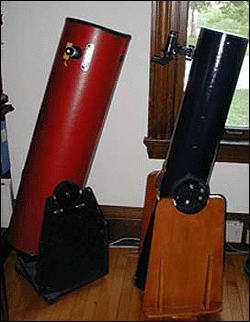Want to see where your star is in the night sky?
Stars are located within constellations, which are just areas of the night sky. Scorpius, Aries and Taurus are examples of constellations. Your Name A Star Live Star Certificate displays the name of your constellation.
You can use the World Constellation Map below to determine if you can see your constellation during the evening hours (between sunset and midnight) in November. Of course, you’ll need a telescope to see your star. (That’s why we include the SLOOH online telescope experience in our Deluxe, Framed and Ultimate Gift Sets!) But you can see your constellation without the use of a telescope.

DIRECTIONS: Find your approximate location in one of the horizontal bars on the map, and then note the corresponding red number (1-7). Then find your number in the list below to identify what Name A Star Live constellations you can see this month from your corner of the world.
1. Those of you in northern climes can see Andromeda, Aries, Cassiopeia, Gemini, Pisces, Taurus, and Ursa Minor, where the “Little Dipper” and the North Star are located.
2. Andromeda, Aquarius, Aries, Capricorn, Cassiopeia, Gemini, Orion, Pisces, Taurus and Ursa Minor are visible.
3. Andromeda, Aquarius, Aries, Capricorn, Cassiopeia, Gemini, Orion, Pisces and Taurus are visible.
4. Look for Andromeda, Aquarius, Aries, Capricorn, Cassiopeia, Gemini, Orion, Pisces and Taurus this month.
5. Andromeda, Aquarius, Aries, Capricorn, Orion, Pisces and Taurus are visible this month.
6. Aries, Pisces, Orion and Taurus are visible.
7. Aries, Orion, Pisces and Taurus are visible.
You can also find your constellation by using our Virtual Planetarium™ astronomy software. A planisphere is another useful device.
Here’s a neat image from the Hubble Space Telescope of a beautiful object that can be seen from just about anywhere in the world at this time of the year:

- M45, The Pleiades Star Cluster
Located in the constellation Taurus, the Pleiades Star Cluster (designated “M45” by astronomers) is one of the most famous and beautiful objects in the night sky. The Pleiades, which can be seen without the aid of a telescope, are often confused with the Little Dipper due to the arrangement of the Pleiades’ brightest stars in a ladle-like formation. While, using the naked eye, we can distinguish anywhere from six to nine stars in the Pleiades (depending on local observing conditions and one’s eyesight), in reality M45 has approximately 500 stars located about 400 light-years from Earth.
The Pleiades are also known as “The Seven Sisters” that represent the seven daughters of Atlas and Pleione from classical mythology. The story goes that when Orion attempted to burst into the private sanctuary of the sisters’ home, Venus turned them into a flock of doves so they could fly away to safety.
The Aborigines also interpreted this group of stars as a cluster of young girls. These girls were seen as musicians who played for a group of boys, which are represented by the stars that are seen in the Belt of Orion.
The Zuni people of North America called the Pleiadies “seeds” because the first appearance of the Pleiades helped the Zuni decide when to plant their crops. The Zuni also knew that when the Pleiades moved directly overhead in the early morning it was time to harvest what they had planted, because the winter was coming soon.
The Japanese word for this set of stars is “Subaru,” after which the famous Japanese car company is named. In fact the Subaru corporation’s logo is patterned after M45.
November’s Planets
Jupiter still dominates the evening skies this month: For those of you in the northern hemisphere of Earth, look for the bright, steady light towards the south shortly after sunset. For those of you in the southern hemisphere, look for Jupiter towards the north shortly after sunset.
You earlybirds in the northern hemisphere will see Mars almost due south (almost due north for those of you in the southern hemisphere) shortly before sunrise this month. Regardless of where you live, Saturn will be above the eastern horizon before sunrise in November.








 As you’re thinking about what to get your friends and loved ones for Christmas and/or Hanukkah, you might be interested in some of the holiday messages Name A Star Live customers have included on their Star Certificates in recent weeks. Below are just some of the many holiday messages so far from the 2011 season. (Of course, we’ve changed the names in the messages to protect the privacy of our customers.)
As you’re thinking about what to get your friends and loved ones for Christmas and/or Hanukkah, you might be interested in some of the holiday messages Name A Star Live customers have included on their Star Certificates in recent weeks. Below are just some of the many holiday messages so far from the 2011 season. (Of course, we’ve changed the names in the messages to protect the privacy of our customers.)






